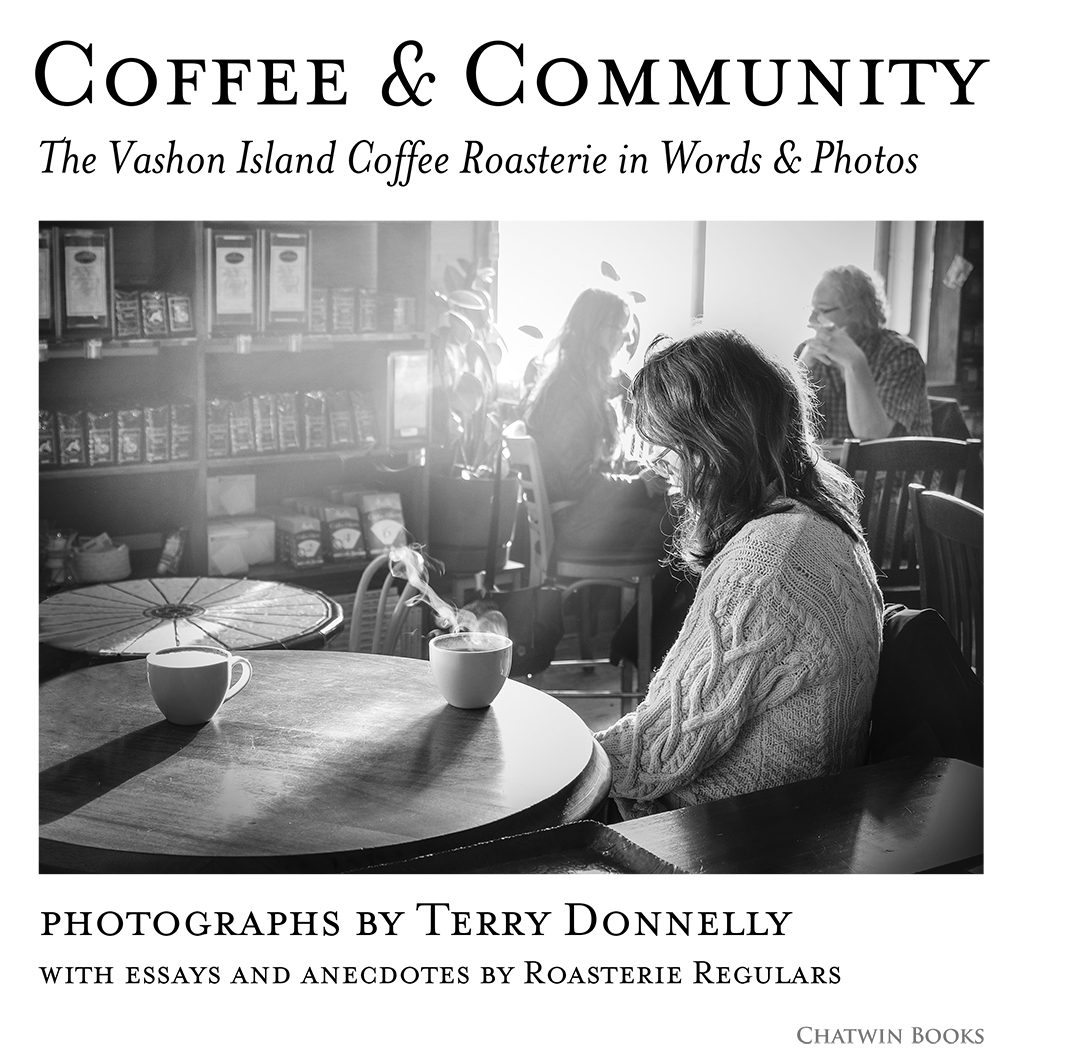What makes Vashon unique? Over the years that question has provoked the imagination of many island writers, poets, photographers and artists. For Terry Donnelly, a professional photographer well known for capturing the ephemeral beauty of landscapes, his answer began with photographing islanders at work and ended with his newly released book, “Coffee & Community The Vashon Island Coffee Roasterie in Words & Photos,” published by Chatwin Books. Donnelly will discuss and sign the book at 6 p.m. Friday at the roasterie.
Two years ago, Donnelly turned 65, and with that birthday, his thoughts turned toward retirement. Wanting to take photographs not motivated by sales, which in the past determined where he and his photographer wife Mary Liz Austen would travel and the subjects they would shoot, Donnelly focused on something closer to his heart: the people who call Vashon home.
“I didn’t want to do the landscape here,” he said in a recent interview. “My overall goal was to define or enlighten exactly what it is that goes on here that is different. Keep Vashon Weird or ‘We live in a bubble’ — it’s not just isolation. We are doing something with that isolation that is unique. I think people are aware of it, but it is hard to articulate.”
Donnelly zeroed in on islanders at work, shooting images of them in their studios, bakeries and at the roasterie, to name a few places and pursuits. He thought capturing what islanders do would be a way to understand where we live. Another clue surfaced after he contacted Vashon native and book designer Annie Brulé and her publishing partner Phil Bevis of Chatwin Books last year — the roasterie as community hub.
“You see all the people, the regulars who come in, even the tourists, and they recognize this is a unique kind of thing,” Donnelly said. “I am trying to capture a nugget of that truth — like doing a portrait of a person, every so often you get a gesture or expression that enlightens who that person is. I’m doing the same thing, not so much of the roasterie itself but the essence of Vashon using the roasterie.”
Bevis agreed, saying sometimes it is people, sometimes activities or places that form a rich web of connection, and “the roasterie is one of those places.”
For Brulé, “Coffee & Community” is not the definitive book about the locale; rather it is the photographer’s way of seeing it. Donnelly concurs, saying it is just “my view, and this place is so much bigger than that.”
To expand on what he caught through his lens, Donnelly asked 10 regulars to write essays about their roasterie experiences. He also included a piece by Duane Dietz about how Center became a commercial crossroad and a piece by Bruce Haulman about the building’s history.
Donnelly and Austen whittled down his collection to about 80 photographs with 65 eventually selected for the book. With Brulé and Bevis, they laid out the images on a long table to see how they looked next to each other. It was then that the essence, the truth of what Donnelly had captured, revealed itself.
“That’s when we realized it was about coffee and community and Vashon magic,” Donnelly said.


